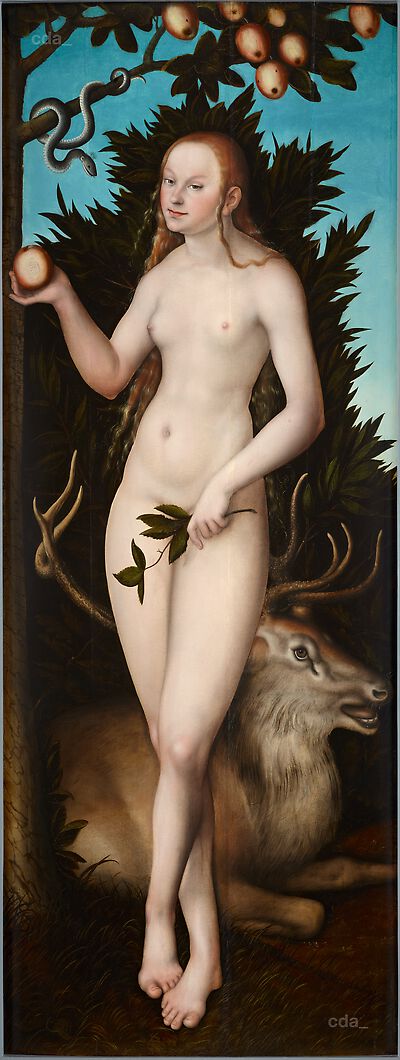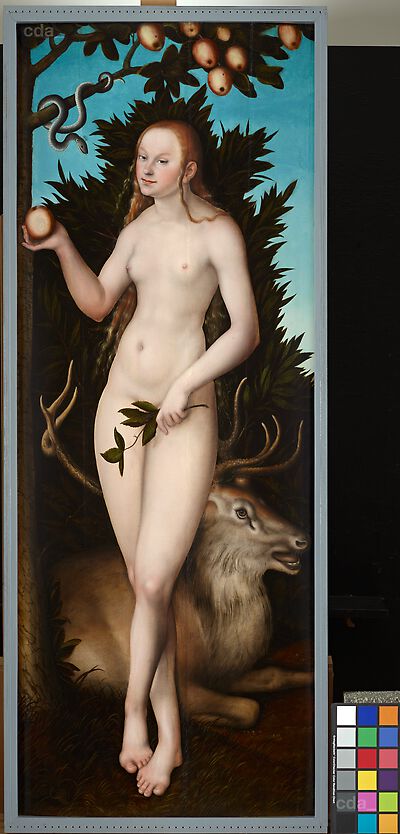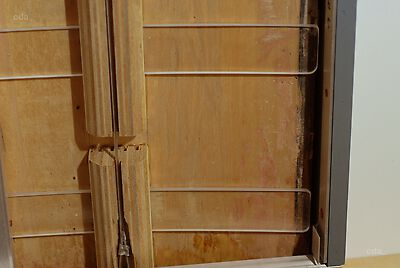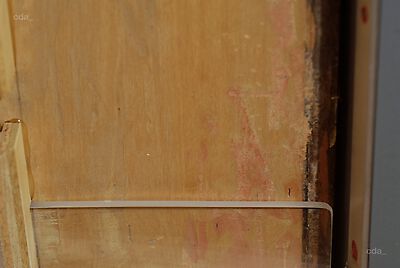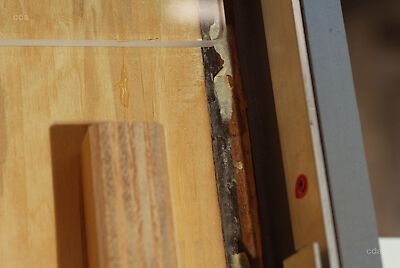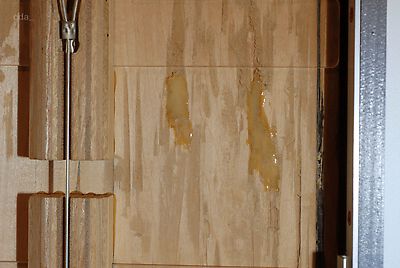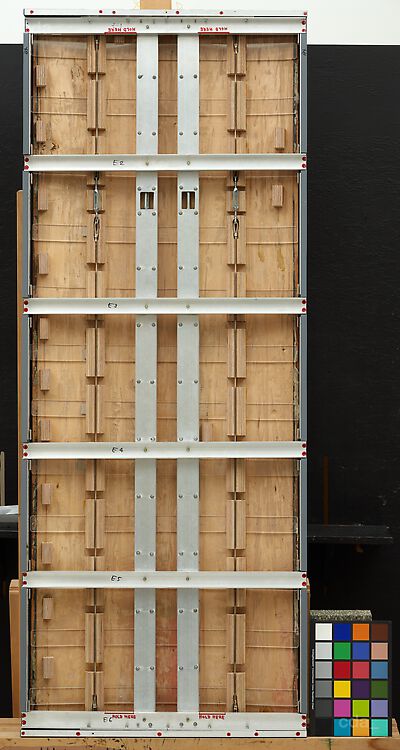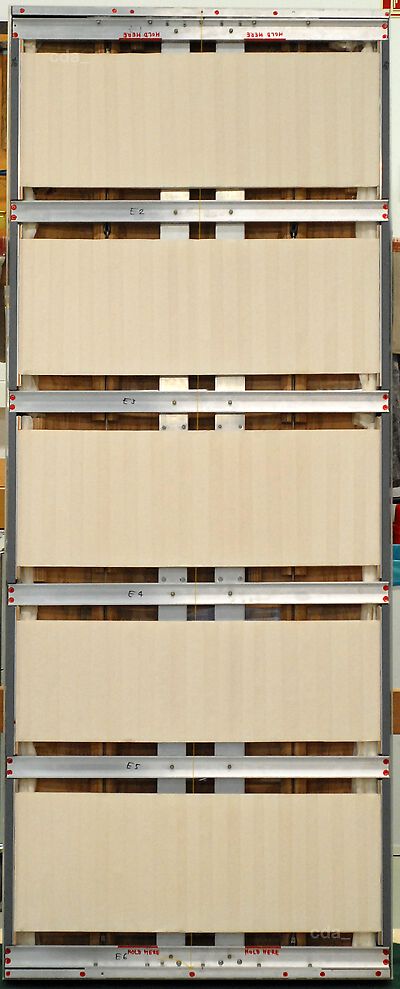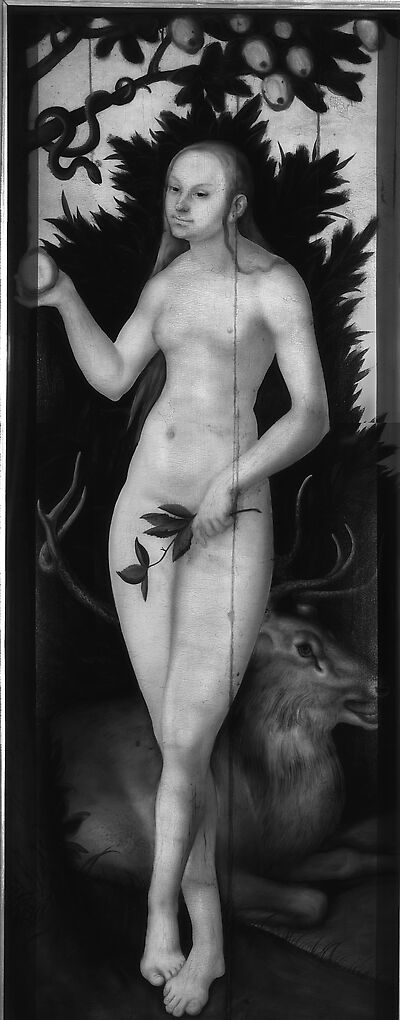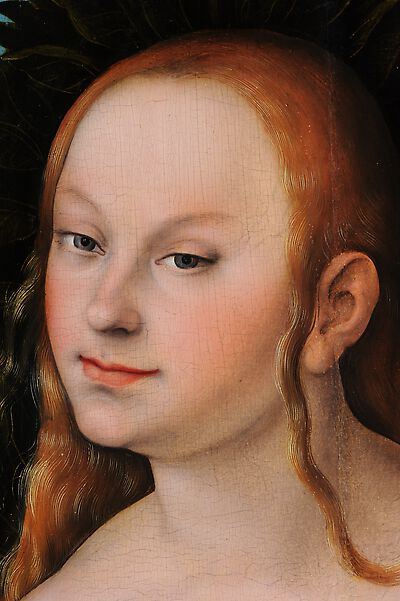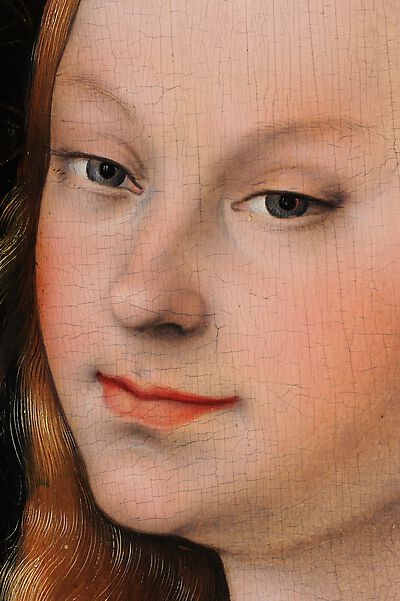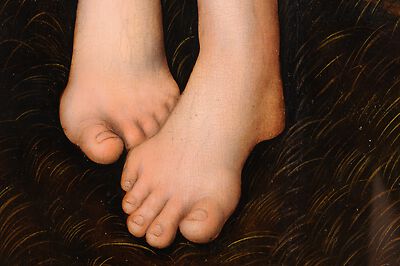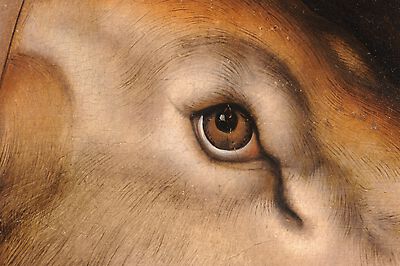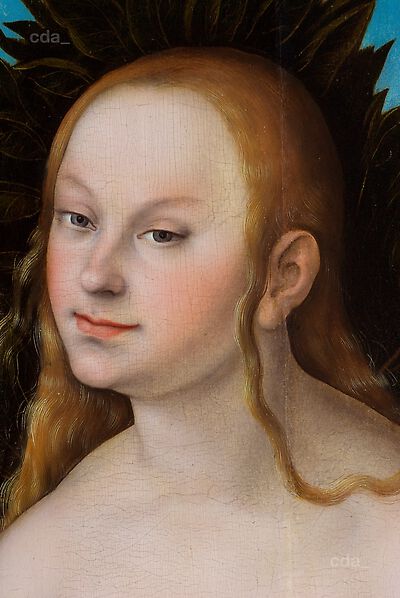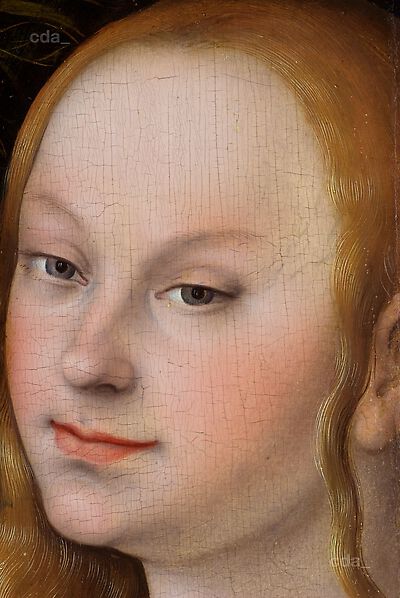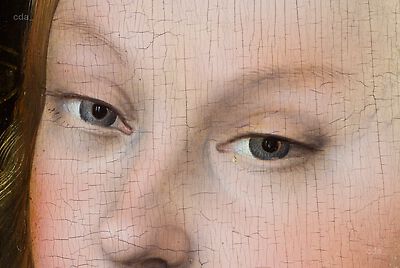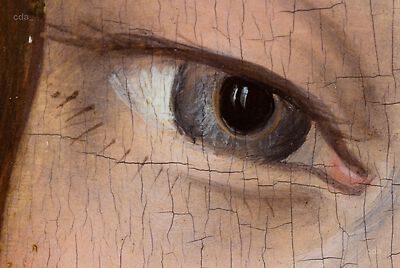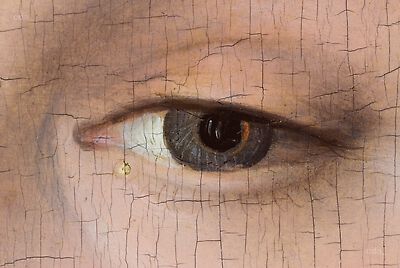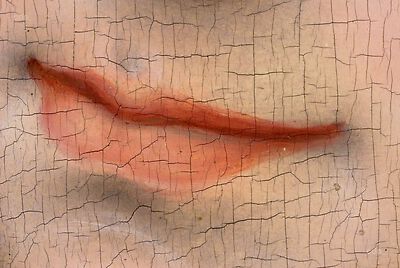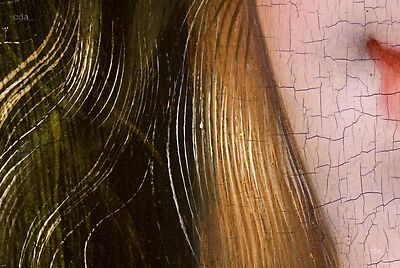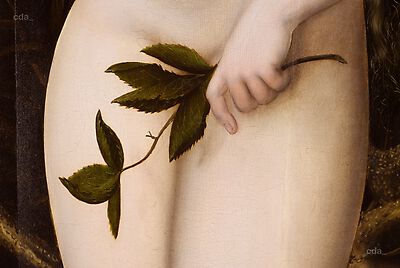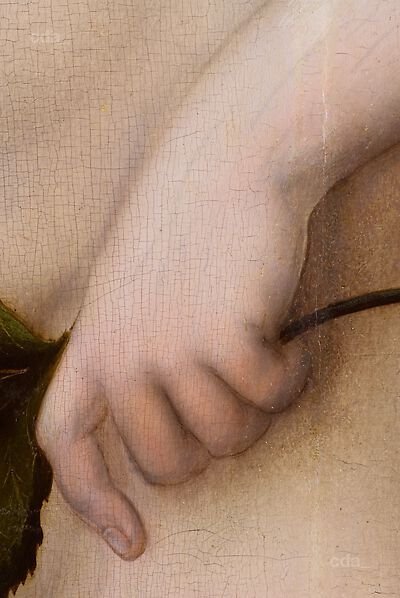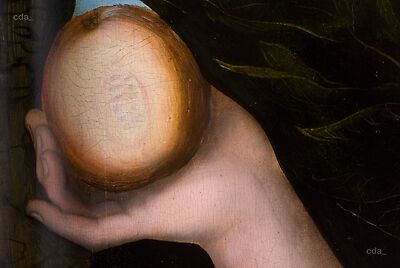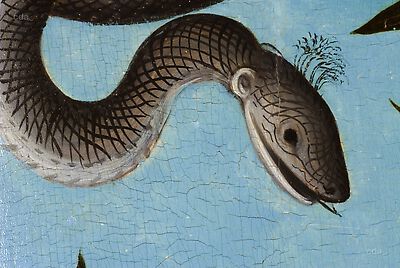Support
- Identification of wood species: lime wood (Tilia sp.), Peter Klein, report from 26.10. 2013
- Plank I (top) two knots, otherwise more or less without knots, presumably tangential cut
- five planks, butt-joined, rebate along all four edges
- plank widths: I: 17.8cm bottom14.9cm top, II: 12.5cm top/10.2cm bottom, III: 12.0cm top/11.1cm bottom, IV: 12.3cm top/11.0cm bottom, V: 16.4cm bottom/14.8cm top
- the original edges of the panel have not been preserved, the panel was thinned about 1960, remnants of a black coating are visible at the edge of the panel (presumably applied while the panel was fitted in an engaged frame), see photograph
- the joins were not reinforced
- rebate width: 14-15mm, panel thickness at the edge: 6mm
Ground and Imprimatura
- white, presumably chalk-glue (not tested)
- thin
- ground extends on all four sides to the edge of the panel, no visible barb
- no imprimatura visible (macro and microscopic examination)
Underdrawing
- economic drawing with a brush visible in the IR under the flesh paint, almost no alterations
- visible to the naked eye as thin brushed line on the lower leg and the the lower arm
- the index finger on the left hand has been altered slightly, the same applies to the toe of the right foot
- no indication that the design was transferred, however we presume that the figure was traced as it is positioned within the composition without any corrections
Paint Layers and Gilding
Figure:
- an initial ochre wash was applied over the white ground. This was then in part wiped away to create the highlights by exposing the white ground. The shadows were laid in over this with a cool brownish-grey underpaint brushed into the highlights. After the drying process an admixture of vermilion/ochre/white was applied wet-in-wet and in part blended with the greyish brown to create a mother-of-pearl-like flesh tone. This tone served to create the half-shadows. The dark brownish-grey underpaint was left for the shadows. Highlights employing an admixture of vermilion/lead white were added and in part blended wet-in-wet with the flesh tone. additional accents employing light grey paint were also added. Finally fine lines were drawn in brown tones. Teh hair was initially painted employing ochre and linear highlights and contours were then added.
Sky:
a light blue paint (a blue/white admixture) was applied over the white ground. In the upper section of painting a thicker application of the same blue paint was dabbed on
Grassy areas:
dark brown underpainting, subsequently a rough indication of the grass structure was applied employing a semi-opaque green paint, finally single blades and leaves were added
Background:
blackish-green underpaint, wet-in-wet application of the green leaf structure, linear accents and contour. finally green glazes were added (now brown)
Stag:
initially applied in a range of greyish-ochre washes, modulated with white highlights and blended, linear application of black to dark grey strokes to create the fur texture his coat, white highlights
Flesh paint: brushstrokes, semi-opaque, glazed, dabbed
Sky: brushstrokes, in part semi-opaque, dabbed
Background: brushstrokes, opaque, glazed
- mid-range pointed brush; paint consistency in the flesh paint thin to very thin, otherwise semi-opaque to opaque with some impasto along the contours.
- at the top and bottom the paint extends in part slightly beyond the edge of the ground (not easy to classify)
- the outline of the left arm has been corrected employing the background paint
Framing
- not original, first half of the 19th century, 1985 altered
- dimensions: 193 x 84.5 x 18 cm
- coniferous wood
- gilded profile frame, classical stucco ornamantation, built up on the reverse (14 cm) so it could be mounted in the display case
[Museum der bildenden Künste, 06.11.2013]
- examined by Andreas Mieth
